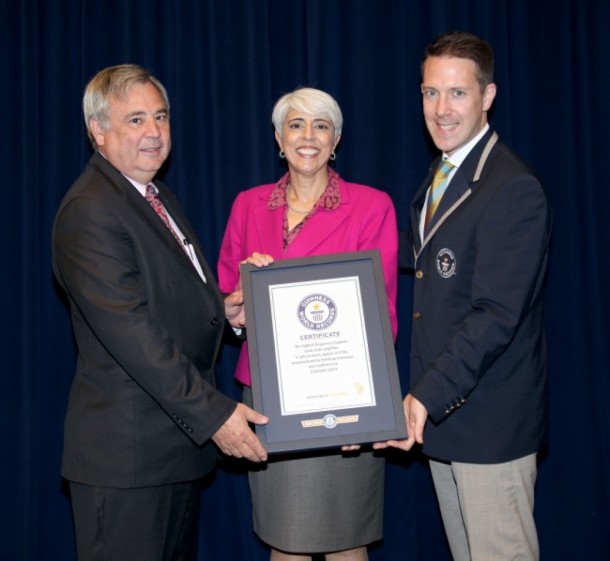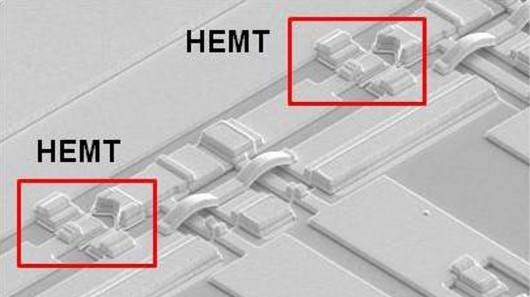Guess who’s work has made it to the Guinness Book of World Records? DARPA’s Terahertz Electronics program that has been developed by Northrop Grumman has been included in the Guinness Book of World Records for being the fastest Solid-state Amplifier Integrated Circuit. Named as Terahertz Monolithic Integrated Circuit (TMIC), it is a 10-stage common-source amplifier that is capable of delivering one trillion cycles per second, or in other words, one terahertz (1012 Hz).
DARPA speculates that the state of current electronics must be able to tackle speeds of 300 GHz while allowing for wavelengths that are less than a millimeter to be able to cope up with next generation of radar, spectroscopy, imaging and communications technology. The particular property in question is gain – the ability of an electrical circuit to increase the power of a signal (from input to output) and is measured in decibel (dB) units.
TMIC is based on the work done by DARPA’s HiFIVE, TFAST and SWIFT programs and can achieve speeds that are 150 billion cycles faster than the last record, which was set in 2012 at 850 GHz. TMIC has power gains that, when it comes to magnitude, are greater by several orders as compared to prevailing circuits and come with a gain of 9 dB at 1 THz and 10 dB at 1.03 THz. A smartphone, if you’re looking for comparison, can only tackle 2 GHz.
Dev Palmer, DARPA Program manager says, “Gains of six decibels or more start to move this research from the laboratory bench to practical applications — nine decibels of gain is unheard of at terahertz frequencies. This opens up new possibilities for building terahertz radio circuits.”
DARPA hasn’t revealed much about the working, however, such a system implies that the conventional approach can be ignored and new possibilities are at the door. Palmer, while commenting on this, said, “Terahertz circuits promise to open up new areas of research and unforeseen applications in the submillimeter-wave spectrum, in addition to bringing unprecedented performance to circuits operating at more conventional frequencies. This breakthrough could lead to revolutionary technologies such as high-resolution security imaging systems, improved collision-avoidance radar, communications networks with many times the capacity of current systems and spectrometers that could detect potentially dangerous chemicals and explosives with much greater sensitivity.”
Pretty amazing, isn’t it?

